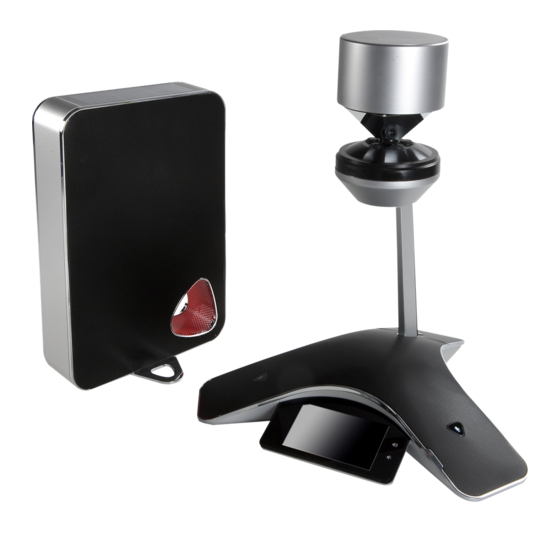
Polycom CX5500 Unified Conference Station Manuals
Manuals and User Guides for Polycom CX5500 Unified Conference Station. We have 4 Polycom CX5500 Unified Conference Station manuals available for free PDF download: Administrator's Manual, User Manual, Setting Up
Polycom CX5500 Administrator's Manual (386 pages)
Unified Conference Station
for Microsoft Lync
Brand: Polycom
|
Category: Conference System
|
Size: 16.36 MB
Table of Contents
-
-
-
-
-
-
-
Audio Codecs170
-
IEEE 802.1P/Q172
-
-
Lock the Phone188
-
-
Status Menu201
-
Log Files202
-
Calling Issues213
-
Display Issues213
-
Audio Issues214
-
Upgrading Issues214
-
-
Apps235
-
Button238
-
Call239
-
Calllists243
-
Device243
-
Dialplan252
-
Dir255
-
Broadsoft256
-
Local256
-
Corp257
-
Divert259
-
Dns260
-
Efk262
-
Exchange264
-
Feature265
-
Httpd267
-
Keyboard268
-
Lcl268
-
Datetime271
-
Loc272
-
Log273
-
Sched275
-
Msg276
-
Mwi277
-
Nat277
-
Phonelock278
-
Powersaving279
-
Pres280
-
Prov281
-
Ptt283
-
Qos283
-
Reg285
-
Request294
-
Roaming_Buddies294
-
Roaming_Privacy294
-
Saf295
-
Pat297
-
Sec302
-
Encryption302
-
Pwd/><Length303
-
Srtp304
-
-
Hostmovedetect306
-
Tcpipapp311
-
Dhcp312
-
-
Dns312
-
Ice313
-
Sntp313
-
Port/><Rtp315
-
Keepalive316
-
-
Filetransfer316
-
Upgrade322
-
Voice328
-
-
-
-
Request Support348
-
Header Support349
-
Response Support352
-
Transfer356
-
-
Advertisement
Polycom CX5500 User Manual (130 pages)
Unified Conference Station for Microsoft Skype for Business
Brand: Polycom
|
Category: Conference System
|
Size: 1.6 MB
Table of Contents
-
-
-
-
End a Call33
-
Stop Video34
-
-
-
-
Hold Calls42
-
Resume Calls43
-
-
-
-
-
Shared Lines
67 -
-
-
-
Access Voicemail104
-
-
-
-
Set the Language115
-
-
-
Remove Warnings125
-
-
Polycom CX5500 User Manual (92 pages)
Unified Conference Station for Microsoft Lync
Brand: Polycom
|
Category: Conference System
|
Size: 4.57 MB
Table of Contents
-
Get Started
10 -
-
-
Home View20
-
Lines View22
-
Calls View24
-
-
-
-
Get Help
87
Advertisement
Polycom CX5500 Setting Up (2 pages)
Brand: Polycom
|
Category: Conference System
|
Size: 8.24 MB



